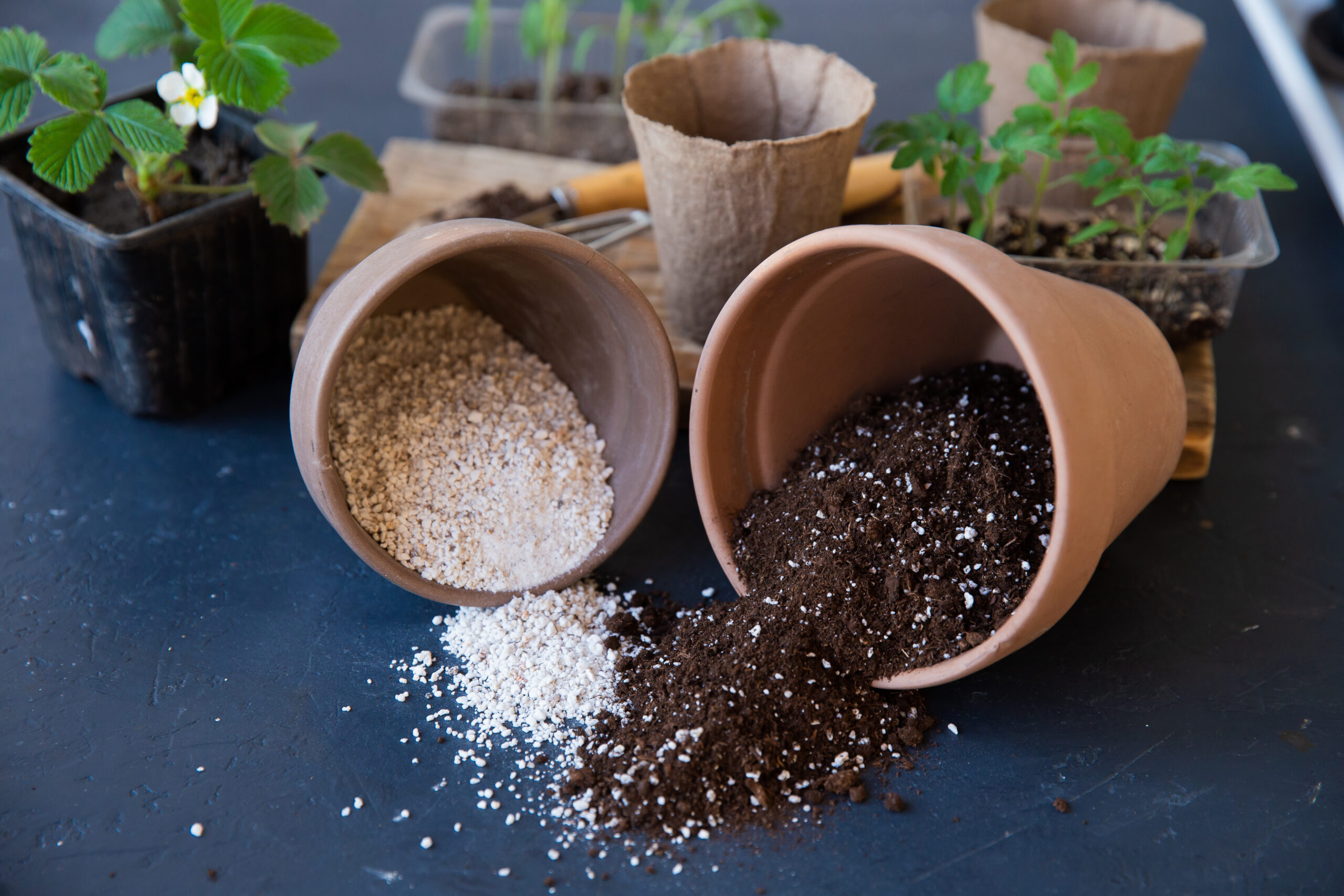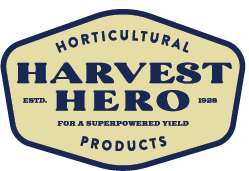How to Use Perlite to Improve Soil and Grow Healthier Plants

If you’ve ever seen those little white, popcorn-like pieces of material around soil and potted plants, chances are good you’ve already come across perlite. Perlite is formed by magmatic (molten) rock, more commonly known as volcanic glass. As it forms and cools, water is absorbed into the raw perlite ore matrix. When heated, the entrapped water molecules turn to steam and expand the particles—just like popcorn! These expanded perlite ores are used across various industries because of their lightweight, inorganic, pest-proof, insulative, and fireproof properties. Horticulture hobbyists and commercial gardeners alike use perlite to help improve soil conditions and grow healthier plants. Read on to learn how to grow like a pro using perlite!
Soil Health Considerations
There are several factors that impact soil conditions and either support or hinder plant growth.
Compaction: Compaction is when the physical structure of your soil becomes dense and “packed down” due to either natural or human activities such as walking on it or construction. Compacted soil is less able to absorb water and air, which can limit root growth and decrease overall plant health. To counter this, break up compacted spots with a shovel or rake before planting your garden.
pH Levels: The acidity or alkalinity of your soil is measured by its pH levels (potential hydrogen). It ranges from 0-14, with 7 being neutral. Most plants prefer a range between 6-7, however, some plants may require more acidic or alkaline soils depending on their needs. As such, it’s important to test the pH level of your soil before planting anything in it. You can buy test kits at most gardening stores that will help you determine if your soil needs to be amended with lime or sulfur to adjust pH levels.
Soil versus Soilless Media: Soil refers to organic material that has been broken down over time like dirt found in nature while soilless media is a synthetic material made up of things like perlite, peat moss, and coco coir used primarily for container gardening because they are lightweight and easy to work with but don’t contain any nutrients on their own so they must be supplemented regularly with fertilizer. Which one you choose depends on your individual needs–do you want something light for containers or something more nutrient-rich for raised beds?
Soil Type: If you choose to use a soil mix, you’ll need to choose the type of soil that works best for what you’d like to grow. Soil type refers to how much sand, silt, and clay are present in the soil, which affects its ability to retain moisture and nutrients. Sandy soils are coarse and well-drained but dry out quickly, while clay soils are heavy but hold moisture better than sandy soils.
How to Use Perlite to Improve Soil
Horticultural perlite is a lightweight, non-organic, soil conditioner that provides a number of important benefits to commercial growers, landscapers, and home gardeners, including:
- Improved aeration and drainage: Compaction is one of the biggest foes of healthy root systems. Perlite helps break up compacted areas for better water drainage. Plus, it has a high displacement and volume capacity to keep the soil aerated.
- No expiration date: Because perlite is inorganic, it remains stable and doesn’t compose or break down. It won’t mold or attract pests, making it virtually timeless.
- Lightweight: Because of its light weight, perlite is easier to handle and store than other soil mix media.
- Water retention: The extra pocket inside the expanded perlite ore absorbs water, helping keep roots moist while preventing over-watering.
- Prevents the need for other additives and chemicals: Horticultural perlite is free of organic contaminants, helping negate the need for some additional chemicals.
- Neutral pH: As perlite has an ideal pH range of 6.5 to 7.5, you will not have to use other products to balance the pH.
Perlite benefits plants during all stages of development. Whether you have seed starters indoors or a raised garden bed with established plants outside, perlite can improve the conditions of soil to support healthy plant growth.
Explore the Benefits of Growing with Perlite with Harvest Hero.
Harvest Hero Enhanced Perlite Mix is a nutrient-rich soilless amendment and growing medium that is a 3-in-1 blend comprised of perlite, diatomaceous earth, and essential nutrients. Enhanced Perlite Mix helps your plants get the nutrition they need to improve soil conditions, especially during critical vegetative growth weeks. It will increase the plant’s structural integrity, increase stem diameter, and help you achieve increased yields.
Perlite+ Silica
Similar to our Enhanced Perlite Mix, Perlite+ Silica spotlights perlite and diatomaceous earth (the silica content) to support all stages of plant growth. Without the addition of nutrients, you have more control over the ones you add to your soil mix. This natural soil substrate helps you grow because it:
- Maintains high levels of oxygen in the soil.
- Increases your crops’ uptake in water and essential nutrients.
- The silica source provided by diatomaceous earth enhances resiliency towards abiotic environmental stress factors.
- Minimizes pH fluctuations by keeping oxygen levels consistent.
- Increases plant mass and plant growth. The silica fortifies the plant tissue to improve conditions during abiotic stress, like temperature extremes, sunlight, and water extremes.
Consisting of domestically sourced perlite, diatomaceous earth, and essential nutrients, Harvest Hero’s 3-in-1 Enhanced Perlite Mix is unlike anything on the market. Harvest Hero Perlite+ Silica is an industry leading, medium grade, horticultural perlite that is OMRI listed. Try Harvest Hero Enhanced Perlite Mix or Perlite+ Silica today and see the difference it makes in your grow!



